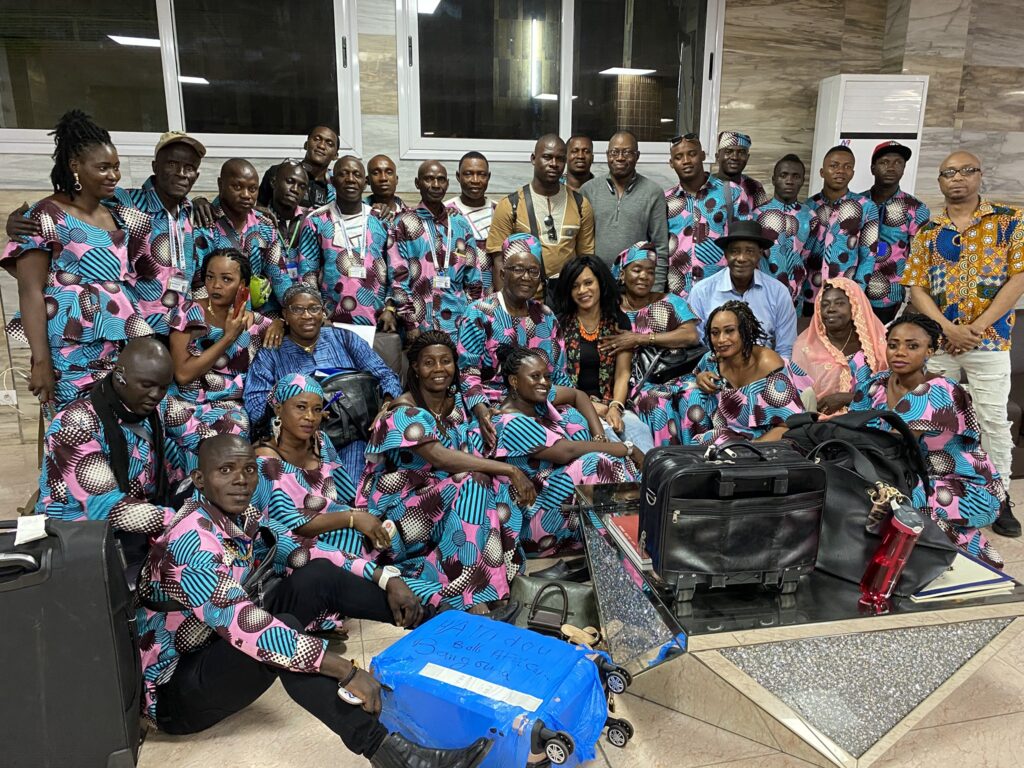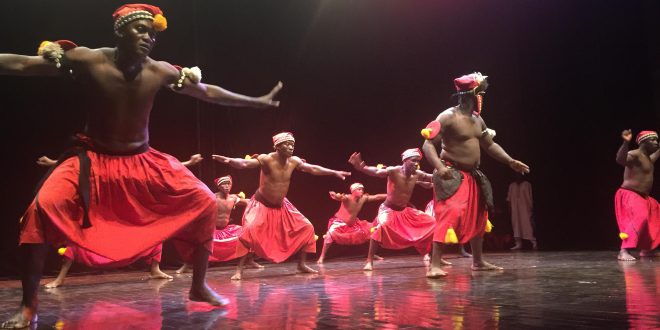Les Ballets Africains has a fascinating history that traces back to the incredible vision of Fodéba Keïta, a Guinean poetry student who immersed himself in the rich cultural tapestry of West African performance. In 1948, while in France, he founded a poetry troupe aimed at showcasing African art and culture. This endeavor soon evolved into the Fodéba Keïta African Theatre Ballet, a dynamic fusion of drumming, dancing, and storytelling that captured the hearts of audiences both in Europe and beyond.
From 1951 to 1955, the company embarked on a transformative journey, touring Europe and the United States—performing in cities like Paris and New York. By 1952, the troupe was rebranded as Les Ballets Africains in Paris. Initially, the company faced significant resistance from various tribes in Guinea, who felt a sense of cultural appropriation when members of other tribes danced their dances or sang their songs. However, over time, these objections faded as the performance group demonstrated its respect for the rich diversity of African cultural expression.
The 1950s marked a turning point for the ensemble, characterized by the inclusion of eminent musicians like djembe virtuosos Papa Ladji Camara and Famoudou Konaté. Born in 1923 in Norasuba, Guinea, Camara was a proud member of the Malinke tribe. He began his journey in 1946 when he moved to Mali to engage in farming and drumming. In 1953, he joined the first Ballets Africanos de Guinée, where he spent a remarkable decade touring the globe and showcasing the power of West African percussion. Please check out the article here I wrote eon him in the interviews section.

The modern group
Famoudou Konaté, born in 1940 near Sangbaralla in the heart of Malinke land, was a true prodigy. He dazzled audiences by playing drums at community festivals by the age of eight and quickly became a sought-after djembefola throughout his region. From 1959 to 1985, Famoudou served as the principal djembe soloist with Les Ballets Africains de la République de Guinée, where his astounding virtuosity captivated hearts across continents. He also contributed significantly to the evolution of musical arrangements that are now staples in West African performance ensembles globally.
Interwoven with the story of Les Ballets Africains is a more complex narrative involving Guinea’s political landscape during and after the post-colonial era. Under Sekou Toure’s leadership, the Democratic Party of Guinea (PDG)—with deeper roots in the Malinke community—initiated a controversial cultural policy dubbed “demystification.” Paired with religious elements aiming to promote Islamic values, the PDG actively sought to dismantle local cultural symbols deemed threatening to their political authority. This often involved traveling to rural areas, taking down, displaying, or even destroying sacred totems vital to local communities, essentially disempowering traditional leaders and creating a rift in the cultural fabric of the nation.
One vivid example of this occurred with the Kakilambe mask, a significant artifact to the Baga people. Reports detailed how this revered object was disassembled and displayed to children and uninitiated adults, leading to a cultural upheaval. Shockingly, the same government that eroded the significance of the Baga’s most sacred object used a theatrically staged version of the mask to showcase a narrative of national unity through art. One can only imagine the feelings of despondence and betrayal experienced by many Baga individuals during those times, especially in light of the history carried forth into popular performances, even in contexts like dance classes today.
The government’s manipulation of cultural symbols didn’t stop there. To bolster its image both domestically and internationally, particularly among socialist sympathizers in countries like East Germany, the regime produced propaganda films into the 1970s. Creatively juxtaposing traditional art with political narratives, these films sought to craft a specific vision of Guinean identity, leaving behind a complex legacy that still echoes in conversations surrounding African heritage and representation.
While it’s tempting to paint the evolution of Les Ballets Africains as a straightforward journey of reconciliation, there are layered histories and sentiments that remain unspoken. Picking up pieces of this intricate past helps us understand not just the rhythms of the djembe or the graceful lines of African dance, but also the weight of culture, history, and identity carried within each performance.

